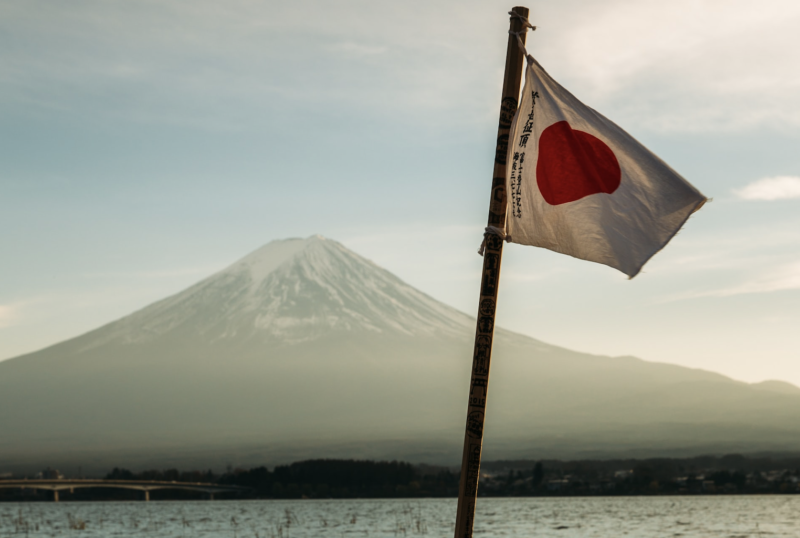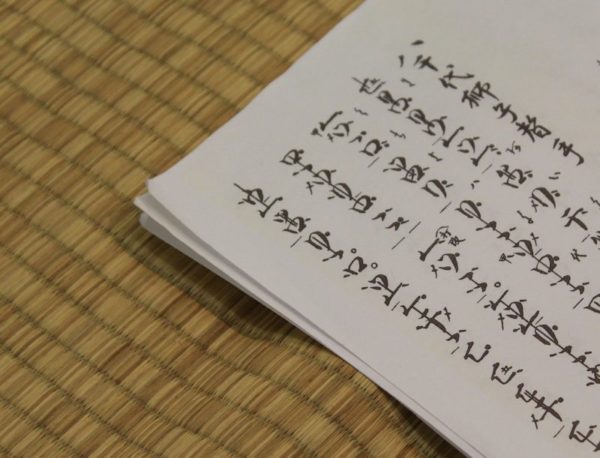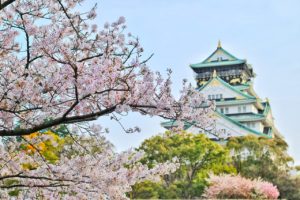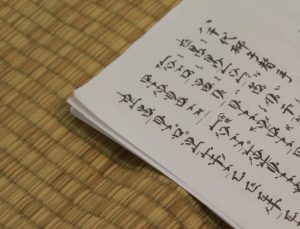The Beauty of the Japanese Language
Without a doubt, the Japanese language is one of the most unique and beautiful languages in the world. And since Japan is a major player in the global market, Japanese is also an important language. Its current use, grammar, and writing system are just as interesting to learn about as its colorful history. Find out every fact and figure you’d like to know here about the Japanese language.
Basic Facts About the Japanese Language
There are about 128 million native Japanese speakers worldwide. This makes Japanese the 9th most widely spoken language in the world in terms of native speakers. Japanese is the official language of Japan, and it’s also most widely spoken there. But, there are also some Japanese speaking communities in Korea, Taiwan, and the United States.
What Language Family Is Japanese In?
Japanese is part of the Japonic language family. There were some theories that Japanese is related to Korean through the Altaic language family, but this idea is largely discredited now. This means that it’s a language isolate (meaning that Japanese isn’t directly related to any languages close to it geographically).
Of course, there’s still plenty of influences on the Japanese language from other neighboring cultures. The most important of these is Chinese. The connection between the languages is undeniable.
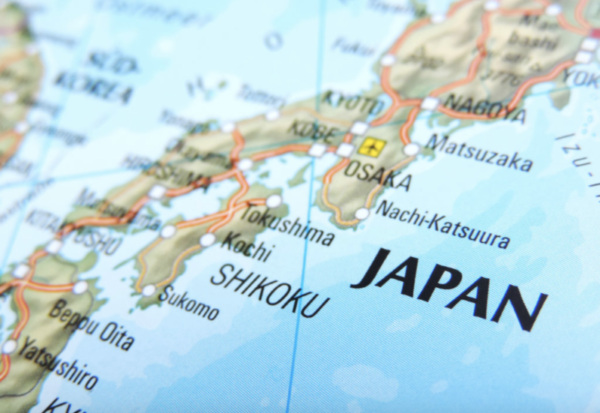
The History of the Japanese Language
There’s definitely a lack of evidence when it comes to the origins of the Japanese language. But, there are a few theories on how the language of Japan came to be. One of these theories is the migration of the Yayoi people from Korea to Japan 2-3000 years ago. Or the language could have originated from the Jomon people already living in the area. But, there’s no way to tell how these languages related to modern Japanese, because they weren’t written down.
Chinese Influence on Japanese
From 300 CE to 900 CE, Japan was closely tied to China through culture and politics. Because of this, a significant Chinese influence shaped the Japanese language in its early phases.
One of the most important of these influences was the writing system. In the 4th century, the Japanese language adopted the Chinese writing system. Since Japanese wasn’t a written language before, Classical Chinese became the first literary language. Then Chinese characters were used to describe Japanese sounds.
Another influence that Chinese had in Japanese was the vocabulary. A lot of Chinese words entered Japanese everyday speech. These words are called kango, and it’s estimated that 60% of modern Japanese words have Chinese origins.
Middle Japanese
From 1185 to 1600 Japanese moved away from Chinese in search of its own sound and writing system. This means it developed closer to how Modern Japanese sounds today. The arrival of European traders to Japan marks the end of this period. A few European vocabulary words entered Japanese, but this exchange of languages was short-lived.
Between 1603 and 1853, Japan had a period of national isolation called sakoku. Foreign contact with other languages was limited in this period. The only acceptable connection to the outside world was through a Dutch trading post in Nagasaki. So, a lot of Dutch loanwords entered Japanese from this period.
Some you can still recognize today:
Japanese Loanword from Dutch |
Romanized Spelling |
Meaning |
ランプ |
ranpu |
lamp |
コーヒー |
kōhī |
coffee |
ガラス |
garasu |
glass |
This period is called Edo, because the capital of the nation was Edo (modern day Tokyo), and the Edo dialect was the most prominent one in Japanese.
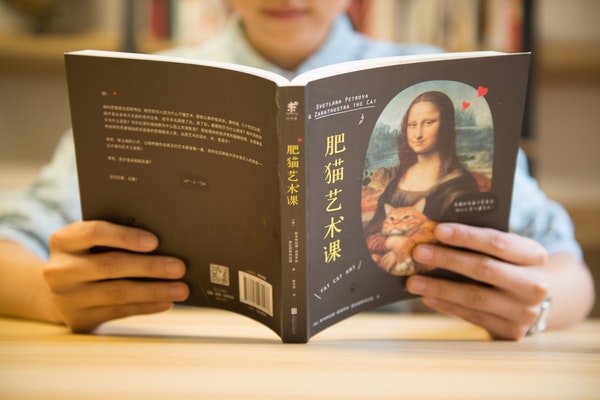
Modern Japanese
Once the isolation ended, Japan moved to the Meiji period. This meant more connection to the outside world, and more loanwords into the Japanese language. The mixture of writing foreign loanwords with Chinese characters was called wasei kango (Japan-made Chinese words).
Since WWII, the Japanese adopted a lot of foreign words, most commonly from English. You can definitely recognize a couple of everyday words in Japanese that have an English origin:
Japanese Loanword from Dutch |
Romanized Spelling |
Meaning |
コンピューター |
konpyūtā |
computer |
アニメ |
anime |
animation |
エレベーター |
erebētā |
elevator (lift) |
The History of the Japanese Writing System
The first written evidence of Japanese comes from the 8th century. There are two kinds of writing from that period:
- Kanbun: The writing of Japanese in Classical Chinese style, using Chinese characters to represent the meaning of Japanese words. These texts were essentially Chinese but were intended to be readable in Japanese.
- Man’yogana: Japanese writing where Chinese characters were used to represent the phonetic sounds of Japanese. Numerous different characters could be used to represent the same sound.
But, using Chinese characters to write Japanese words was a lot of work. Japanese needed a writing system that truly reflected how the language sounded. And so hiragana and katakana were born.
Originally, hiragana and katana were used to annotate kanbun texts. This made reading Chinese characters much easier. Chinese characters represented the meaning, and hiragana and katana were the guides for pronunciation and grammar.
Hiragana, Katakana, and Kanji: The Writing System of the Japanese Language
Today, Japanese uses a mixture of three scripts. These three are:
- kanji: originally Chinese characters
- hiragana: phonetic letters to represent Japanese words
- katakana: also phonetic letters to represent Japanese words
You use these different characters for different words and situations. But, very often, a word in Japanese can be written in a mixture of two scripts (usually kanji and hiragana). Hiragana is used for words of Japanese origin, while katakana is for foreign loanwords.
It’s fair to ask, if hiragana and katakana characters cover all of Japanese speech in writing, why don’t Japanese people use just those?
Well, kanji is usually a single character that conveys a meaning. So, it’s much faster to use that to spell everything out phonetically.
Kanji
There are over 2000 kanji characters in Japanese. I know, it’s a lot to learn. But, you can take your time learning kanji. Apart from some of the most common kanji characters, you’ll rarely use all 2000 of them. For now, here are a couple of common ones so you see what they look like.
Kanji |
Meaning |
Onyomi |
Kunyomi |
先 |
Before, ahead, future |
sen |
saki |
来 |
To come |
rai |
ku(ru) |
半 |
Half, middle |
han |
naka(ba) |
毎 |
Every, each |
mai |
— |
何 |
What, which, how many |
ka |
nan, nani |
人 |
Person |
jin, nin |
hito |
Hiragana
k |
s |
t |
n |
h |
m |
y |
r |
w |
|||
a |
あ (a) |
か (ka) |
さ (sa) |
た (ta) |
な (na) |
は (ha) |
ま (ma) |
や (ya) |
ら (ra) |
わ (wa) |
ん (n) |
i |
い (i) |
き (ki) |
し (shi) |
ち (chi) |
に (ni) |
ひ (hi) |
み (mi) |
り (ri) |
|||
u |
う (u) |
く (ku) |
す (su) |
つ (tsu) |
ぬ (nu) |
ふ (fu) |
む (mu) |
ゆ (yu) |
る (ru) |
||
e |
え (e) |
け (ke) |
せ (se) |
て (te) |
ね (ne) |
へ (he) |
め (me) |
れ (re) |
|||
o |
お (o) |
こ (ko) |
そ (so) |
と (to) |
の (no) |
ほ (ho) |
も (mo) |
よ (yo) |
ろ (ro) |
を (wo) |
Katakana
k |
s |
t |
n |
h |
m |
y |
r |
w |
|||
a |
ア (a) |
カ (ka) |
サ (sa) |
タ (ta) |
ナ (na) |
ハ (ha) |
マ (ma) |
ヤ (ya) |
ラ (ra) |
ワ (wa) |
ン (n) |
i |
イ (i) |
キ (ki) |
シ (shi) |
チ (chi) |
ニ (ni) |
ヒ (hi) |
ミ (mi) |
リ (ri) |
|||
u |
ウ (u) |
ク (ku) |
ス (su) |
ツ (tsu) |
ヌ (nu) |
フ (fu) |
ム (mu) |
ユ (yu) |
ル (ru) |
||
e |
エ (e) |
ケ (ke) |
セ (se) |
テ (te) |
ネ (ne) |
ヘ (he) |
メ (me) |
レ (re) |
|||
o |
オ (o) |
コ (ko) |
ソ (so) |
ト (to) |
ノ (no) |
ホ (ho) |
モ (mo) |
ヨ (yo) |
ロ (ro) |
ヲ (wo) |
You may notice that hiragana and katakana are very similar. Some letters are positively “twins”. But, others are quite different. That’s because hiragana and katana letters developed from kanji characters. And since one sound often has several kanji characters associated to it, the hiragan and katakana sometimes developed from different kanji characters. But, the pronunciation is the same.
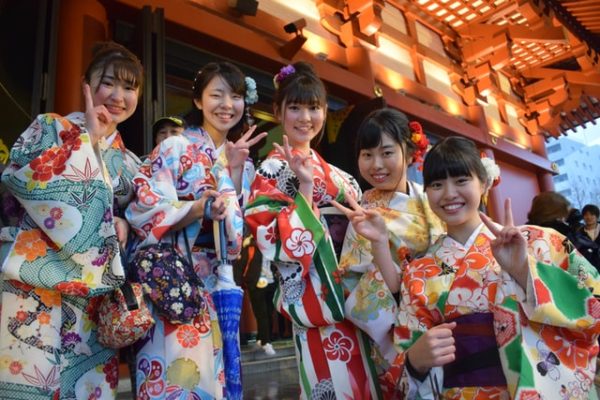
Japanese Dialects
Today, standard Japanese is the Tokyo accent. But, there are a lot more regional dialects in Japan. When you travel to Japan, you’ll surely hear the difference between the pronunciation of these dialects. Here are the most important regional dialects in Japan, named after the region they’re spoken:
- Kansai: the dialect often used in comedy shows and sketches.
- Tohoku: the dialect other Japanese dialects have a hard time understanding.
- Okinawa: In Okinawa, there are endangered indigenous languages collectively called Ryukyuan. The Okinawa dialect reflects these tongues a bit.
Thanks to today’s global world and technology, Japanese dialects are closer to each other than ever. Of course, older, working-class people, and those living in the countryside speak with a heavier dialect. But, most people speak standard Japanese with a hint of the dialect they’re from. It’s just like English accents.
Bottom line is, everyone in Japan understands standard Japanese. So, don’t worry about which dialect you need to learn when you’re studying Japanese.
The Phonology of the Japanese Language
There are only 5 vowels in Japanese: a, e, i, o, u.
Japanese vowel |
What it sounds like |
Pronunciation Example |
あ |
a |
a in father |
え |
e |
e in get |
い |
i |
like e in meet |
お |
o |
o in rope |
う |
u |
like oo in book |
There are also long versions of the same vowels: ā, ē, ī, ō, ū. The difference between short and long vowel pronunciaiton is very important, as it can change the meaning. Japanese vowels are never shortened, you always need to fully pronounce them. The consonants in the Japanese language are basically the same as in English in terms of pronunciation.
Japanese syllables almost always end in a vowel. This means that consonant clusters are very rare (unlike in Polish). The only exceptions to this are the few cases of double consonants, the nasal sound “n”.
Is Japanese a Tonal Language?
Since Japanese was so influenced by Chinese, it’s fair to assume that it’s also a tonal language. In tonal languages, if you pronounce a word with two different intonations, you can have two different meanings. Japanese isn’t so simple.
Officially, Japanese isn’t a tonal language. But, there are pitch accents which you have to be careful with. Japanese moral can have a low or high pitch. These pitches represent the accent that you have to place on the pronunciation. And these sometimes hold different meanings. But, this system sounds complicated, but mastering Japanese pronunciation is a lot easier than Chinese for example.
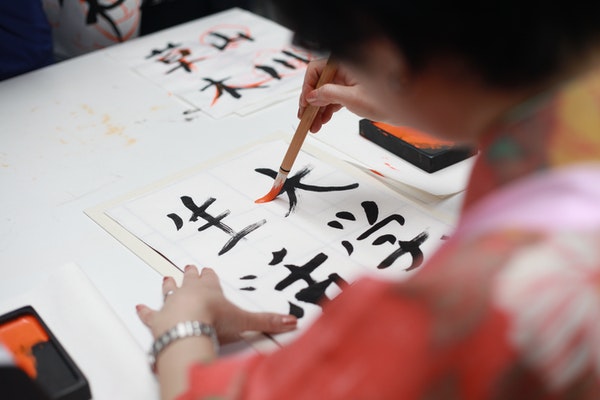
How to Write in Japanese
Japanese is traditionally written from top to bottom, right to left. But, today, Japanese is also written from left to right vertically, just like in English.
The smallest unit of Japanese writing measurement is the character. These can be kanji, hiragana, or katakana. Then, these characters form a unit called a mora. This isn’t officially a syllable, it’s shorter than that.
Japanese Sentence Structure
The basic Japanese word order is SOV (subject-object-verb).
- Himari ate sushi. – ひまりは寿司を食べました (Himari wa sushi o tabemashita)
Himari is the subject, ate is the verb, and sushi is the object. In Japanese, the SVO sentence structure turned to SOV (complete with subject and object markers). In Japanese, if the context is clear, you can drop various parts of the sentence. For example, if you’re clearly talking about yourself, you don’t need to add a pronoun. Or if the object of the sentence has been mentioned before, you can easily leave it out.
There are also equational sentences in Japanese, where you don’t even need a verb in the sentence. But, the sentence does ultimately need a verbal form. These happen when there’s a noun or adjective + copula in the sentence.
- Himari is a secretary. – ひまりが秘書です。(Himari ga hisho desu)
Japanese Topic Markers and Subject Markers
In the previous example sentences, you can see that there are some extra words in there. “Wa” and “ga” aren’t just some stray letters. They’re the topic and subject markers in the sentence.
You use は (wa) to signal the topic of the sentence. True, this is very often the subject at the same time. But, if you only need to mark the subject as the topic if you haven’t talked about it before. So, if it’s newly the subject, you need to put が (ga) after it. And if the subject is already established, は (wa) marks the topic of the sentence. が (ga) can also be used to place emphasis in the subject.
Japanese Particles
While は (wa) and が (ga) are the most common, there are numerous other particles in Japanese. These little syllables show the different functions and categories that exist in a sentence. This is a unique feature of Japanese that doesn’t translate into English.
Particles always come after the word they’re connected to. Some signal a grammatical function (が (ga), は (wa), を (o)), others are more like prepositions (から(kara – from), に (ni – to), の (no – of)).
The Japanese Language Has Agglutinative Verbs
Agglutination in languages means that you can add something to the end of the word that changes its meaning. Japanese is partially an agglutinative language, especially when it comes to its verbs.
Instead of expressing another idea by adding another word, in Japanese, you just need the appropriate affix or postposition to change the meaning.
- eat – 食べる (taberu)
- ate – 食べた (tabeta)
- it has been eaten – 食べられた (taberareta)
- I want to eat – 食べられたい (taberaretai)
- I don’t want to eat – 食べたくない (tabetakunai)
“-ta” is a suffix that shows past tense, while “-areru” shows passive action. “-aretai” shows desire to do something. As you can see, instead of auxiliary verbs, Japanese just adds the different suffixes to the word directly to change the meaning. This is agglutination.
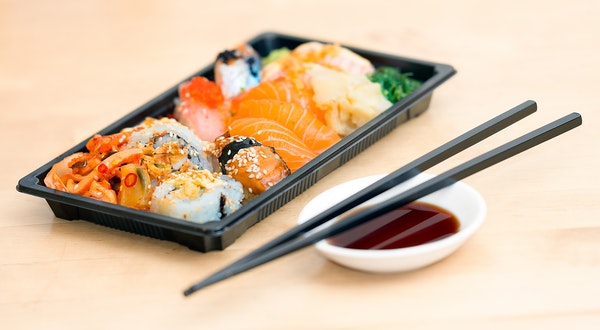
Japanese Vocabulary
From the history of the Japanese language, you can already see the origins of Japanese word. The three options for the roots of these words are:
- Native Japanese (wago)
- Chinese loanwords from Chinese characters (kango)
- Foreign, non-Chinese loanwords (gairaigo)
As also mentioned before, the Japanese writing system uses three scripts: kanji, hiragana, and katakana. Katakana is exclusively used to write non-Chinese foreign loanwords (gairaigo) phonetically.
Is Japanese a Hard Language to Learn?
Well, I’ll be honest. Learning Japanese isn’t as easy as learning French for a native English speaker. But, that doesn’t mean that it’s hard. Only that every Japanese learner needs to face a new writing system, logic, and completely new vocabulary in their studies. But, that hardly makes learning Japanese impossible.
According to the US Foreign Service Institute, Japanese is one of the hardest languages in the world. But, they don’t know you. They don’t know your motivation, enthusiasm, and what language learning methods you’re using. So, with the right tools, you can make your Japanese studies a lot easier than they give you credit for.

Is Japanese Worth Learning?
Absolutely. 100%. Without a single doubt. Even though it’s considered a harder language to learn than other, learning Japanese will benefit your life. In fact, the difficulty may actually give you an edge. Speaking Japanese fluently can open a lot of doors for you. You can enhance your career opportunities, secure higher pay, travel to Japan easily, and even improve your brain health.
It’s worth mentioning that Japan has the 3rd highest GDP in the world. That means that economic growth and business opportunities in Japan are insanely high. And if you speak Japanese, you can cash in on that much more easily.
But, even if you don’t hope to gain career benefits, you can still learn Japanese for fun. You can use your Japanese knowledge to watch Japanese films, listen to music, and access the incredible entertainment industry of Japan.
Master the Japanese Language Easily
Regardless of your motivation, there’s only one way to learn Japanese easily. And that’s by only focusing on the vocabulary you’ll actually use. With over 2000 kanji characters, you really can’t be wasting time on the unnecessary Japanese words and phrases. So, dial in on the most crucial Japanese material with OptiLingo.
OptiLingo is an app that has a built-in vocabulary list of the most essential words and phrases in Japanese. We know because these are the words and phrases real Japanese locals use every day. OptiLingo also focuses on teaching you how to speak, not type Japanese. Speaking is the most important way you’ll communicate when you’re in Japan, so you need to build your Japanese speaking confidence ASAP. Achieve Japanese learning success when you download OptiLingo!

